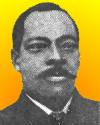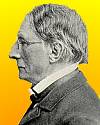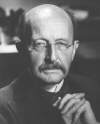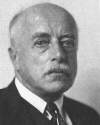
On 23 Apr 1856, Granville T. Woods was born, outstanding as a prolific inventor. For holding more patents than any other African-American in his era, he has been called “the Black Edison.”
In his book Men of Mark: Eminent, Progressive and Rising, author Rev. William J. Simmons, while President of the State University, Louisville, Kentucky, in 1887, profiled dozens of notable African-Americans in tribute to their “intellectual vigor.” Simmons was himself a former slave, a soldier in the Union Army during the Civil War (1864-65), as well as a journalist.
Though moderate, Simmons was progressive politically, and worked pragmatically within the strictures of segregation to benefit African-Americans. Had he not died suddenly of a heart attack at the early age of 41 (in 1890) while he was nearing national recognition from his writings, he might have been as well-remembered as, for example, Booker T. Washington.
Simmons’ chapter on Granville T. Woods includes several quotes from contemporary newspapers recognizing the importance of Woods’ devices invented for the safety of railways and street-cars.
As you read this chapter, you will be introduced to two notable 19th-century African-Americans: one you know, Granville Woods, but also the author, William Simmons.

On 23 Apr 1856, Granville T. Woods was born, an American mechanical engineer, sometimes called the black Edison. Among many other inventions, he patented an elevator signaling device, an electric railway conduit, and a steam boiler furnace. Today's book pick is: Black Inventors in the Age of Segregation: Granville T. Woods, Lewis H. Latimer, and Shelby J. Davidson, by Rayvon Fouche. The author details the personal lives of these three inventors and how they coped with the hardships of invention and the strictures of race. Fouche debunks some of the myths, including financial success, humanizes them and examines the greater significance of their work in the context of American sociological and commercial history. Further, he refutes the common notion that in that era, such inventors were lone geniuses who worked in relative isolation.
It is available from Amazon, typically about New from $81.77. Used from $18.00. (As of earlier time of writing - subject to change.)
 | For the first time there was constructed with this machine [locomotive engine] a self-acting mechanism in which the interplay of forces took shape transparently enough to discern the connection between the heat generated and the motion produced. The great puzzle of the vital force was also immediately solved for the physiologist in that it became evident that it is more than a mere poetic comparison when one conceives of the coal as the food of the locomotive and the combustion as the basis for its life. |
 | An experiment is a question which science poses to Nature, and a measurement is the recording of Nature's answer. |
| no image | Imagination only rarely leads one to a correct answer, and most of our ideas have to be discarded. Research workers ought not to be afraid of making mistakes provided they correct them in good time. |
| Before you look at today's web page, see if you can answer some of these questions about the events that happened on this day. Some of the names are very familiar. Others will likely stump you. Tickle your curiosity with these questions, then check your answers on today's web page. | |
| Births | |
 | Max Planck, born 23 Apr 1858, was a German theoretical physicist who was awarded the Nobel Prize for Physics in 1918 for his quantum theory. This assumes that energy is not infinitely subdivisible, but ultimately exists as discrete amounts he called quanta. Further, the energy carried by a quantum depends in direct proportion to the frequency of its source radiation. The word quanta comes from a Latin word which has what meaning? |
| Deaths | |
 | Max von Laue (1879-1960) was German recipient of the Nobel Prize for Physics in 1914 for his investigation of crystals with X-rays, which enabled scientists to study the structure of crystals. What effect on the X-rays by the crystals did he observe? |
| Events | |
 | On 23 Apr 1981, an artificial transplant was first made in the U.S. on patients at Massachussetts General Hospital, Boston. The transplant material was a combination of cowhide, shark cartilage and plastic. What was the purpose of the transplant? |
 | On 23 Apr 1962, the American satellite Ranger IV, was launched from Cape Canaveral, Florida, which became the first to accomplish a certain mission. What was the mission of Ranger IV? |
 | On 23 Apr 1867, the Zoetrope was patented in the U.S. The device was the first animated picture machine. How did the Zeotrope function to produce an animated picture? |
Fast answers for the previous newsletter for April 22: Los Alamos National Laboratory • electric storage battery • harnessing steam at much higher pressures than before • the decade including the year 1970 • layers of metal forming the body of the lock instead of a stamped shell.
 If you enjoy this newsletter, the website, or wish to offer encouragement or ideas, please send feedback by using your mail reader Reply button.
If you enjoy this newsletter, the website, or wish to offer encouragement or ideas, please send feedback by using your mail reader Reply button. Your click on a Facebook, StumbleUpon, or other social button on the site webpages is also a welcome sign of appreciation. Thank you for using them.
© This newsletter is copyright 2020 by todayinsci.com. Please respect the Webmaster's wishes and do not put copies online of the Newsletter — or any Today in Science History webpage. (If you already have done so, please remove them. Thank you.) Offline use in education is encouraged such as a printout on a bulletin board, or projected for classroom viewing. Online, descriptive links to our pages are welcomed, as these will provide a reader with the most recent revisions, additions and/or corrections of a webpage. For any other copyright questions, please contact the Webmaster by using your mail reader Reply button.
--
If you do not want to receive any more newsletters, Unsubscribe
To update your preferences and to unsubscribe visit this link
Executive Real Estate Business Class
-
"It was like a man with wings. It wasn't like anything you'd see on TV or in a monster movie." ...
About the publisher
Search This Blog
Blog Archive
-
▼
2020
(1542)
-
▼
April
(134)
- ANIMALS: The rush to get a dog
- On This Day for April 30 - George Washington inaug...
- Medical Association Confirms Hydroxychloroquine 90...
- Newsletter for Thursday 30 April.
- April 30: Hitler Commits Suicide but What Happened...
- SCIENCE: The Spinosaurus is scarier than we thought
- Demystified: What’s the Difference Between a Bee a...
- On This Day for April 29 - British royal wedding, ...
- Breaking News and Historians in the News from HNN
- Is this Global Infection-induced Stealth Euthanasi...
- Newsletter for Wednesday 29 April.
- April 29: The Fall of Saigon and the Master of Fak...
- Family: 12 ideas to keep kids busy this week
- TRAVEL: Seeing from afar—the best photography books
- On This Day for April 28 - Benito Mussolini execut...
- Where did those 1600 Nazi Doctors go that were bro...
- Where did those 1600 Nazi Doctors go that were bro...
- Newsletter for Tuesday 28 April.
- April 28: James Cook Lands at Botany Bay, Mutiny o...
- HISTORY: Battling a pandemic so women could vote
- On This Day for April 27 - Independence for Sierra...
- New Op Eds This Week on History News Network
- NY Policy Results in Widespread Nursing Home Elder...
- Newsletter for Monday 27 April.
- April 27: Spanish Settle in the Philippines, Labor...
- SPECIAL: Family guide: Keeping your kids moving!
- The Last Kingdom | Historical quiz questions | Rom...
- On This Day for April 26 - Chernobyl nuclear accid...
- Data tells a drastically different story than what...
- Newsletter for Sunday 26 April.
- April 26: The Great Debate, Chernobyl and Oscar Wi...
- On This Day for April 25 - Hubble Space Telescope ...
- Save your life by using a mask correctly - Can pro...
- Newsletter for Saturday 25 April.
- CORONAVIRUS SPECIAL EDITION: What you need to know...
- April 25: The Guillotine, DNA and the 1st Solar Ba...
- PHOTOGRAPHY: Honoring those who help us every day
- How A Devastating Plague May Have Hastened The Dem...
- On This Day for April 24 - Installation of Pope Be...
- This Week's Roundup Top Ten from History News Network
- Newsletter for Friday 24 April.
- COVID 19 Research, the Nuremberg Code for research...
- April 24: War! What is it Good For?
- YOUR WEEKLY ESCAPE: The secrets hidden in a 500-ye...
- Truth Needs a Champion. Is It You?
- ANIMALS: More cats with the coronavirus. Should I ...
- On This Day for April 23 - Voting for Eritrea's in...
- Newsletter for Thursday 23 April.
- April 23: Defeat of the Vikings, Robert E. Lee and...
- SCIENCE: Beyond Greta: Who’s fighting for the Eart...
- Earth Day Special Edition: Today, let the planet i...
- Demystified Video: What's Inside the Great Pyramid?
- On This Day for April 22 - First Earth Day, Miguel...
- Breaking News from History News Network
- What do you think so far?
- Newsletter for Wednesday 22 April.
- April 22: Portugal Claims Brazil, Barbara Walters ...
- TRAVEL: Marooned at sea, 95,000 people
- On This Day for April 21 - French elections held, ...
- Newsletter for Tuesday 21 April.
- Your support empowers our scientists, explorers an...
- April 21: Babur Establishes the Mughal Empire, Tir...
- The step-by-step plan we are experiencing is expla...
- HISTORY: When George Washington was an epidemic fi...
- On This Day for April 20 - Explosion on the Deepwa...
- This Week's New Op-Eds on History News Network
- Corrected Link: Globalist Plan Rolling Out now cre...
- Globalist Plan Rolling Out now creating global pol...
- Newsletter for Monday 20 April.
- April 20: Pasteurization, Marie Curie Isolates Rad...
- SPECIAL: Coronavirus family guide: 'Back' to school
- VE Day at 75 | The scandalous lives of the Byrons
- On This Day for April 19 - American Revolution beg...
- Newsletter for Sunday 19 April.
- April 19: The 'Shot Heard Round the World' and How...
- Family: It's almost Earth Day! Create your own saf...
- The Compass: Earth Day 50th anniversary edition
- On This Day for April 18 - The midnight ride of Pa...
- Major Media (Fox included) Lies for the Deep State...
- Newsletter for Saturday 18 April.
- Our award-winning storytelling goes further.
- April 18: The 'Regulars are Coming!' and the Life ...
- CORONAVIRUS SPECIAL EDITION: People are having biz...
- PHOTOGRAPHY: On the ground in Nairobi as COVID-19 ...
- On This Day for April 17 - Canada Act proclaimed, ...
- The Roundup Top Ten from History News Network!
- Newsletter for Friday 17 April.
- April 17: The Bay of Pigs Invasion and the Boxing ...
- YOUR WEEKLY ESCAPE: Majestic photos of the tallest...
- Free Download: Britannica's Chrome Extension
- ANIMALS: The quarantine lifeline of a dog (or cat)
- On This Day for April 16 - Harriet Quimby's flight...
- Newsletter for Thursday 16 April.
- April 16: Madame Tussaud's Bloody Background
- SCIENCE: Ways to see what the world could be
- Discover Ancient Sparta with National Geographic H...
- Demystified: Can Eating Too Many Carrots Make Your...
- On This Day for April 15 - Sinking of the Titanic,...
- Breaking News from HNN
- Newsletter for Wednesday 15 April.
-
▼
April
(134)
-
Blogroll
-
About
HistoryFact










0 comments:
Post a Comment